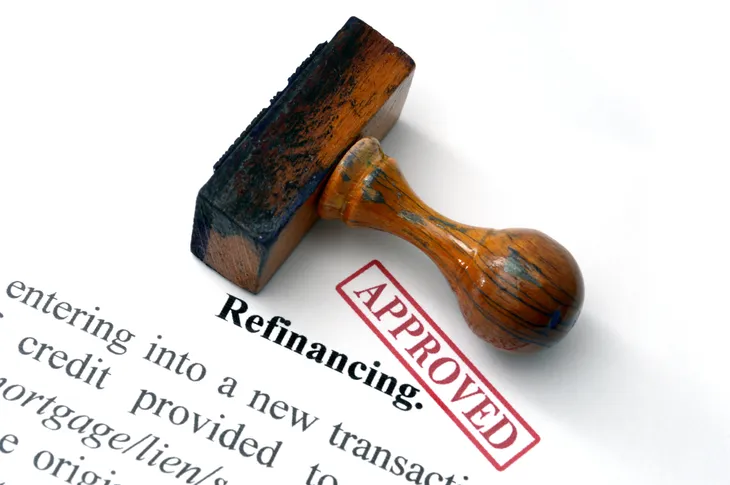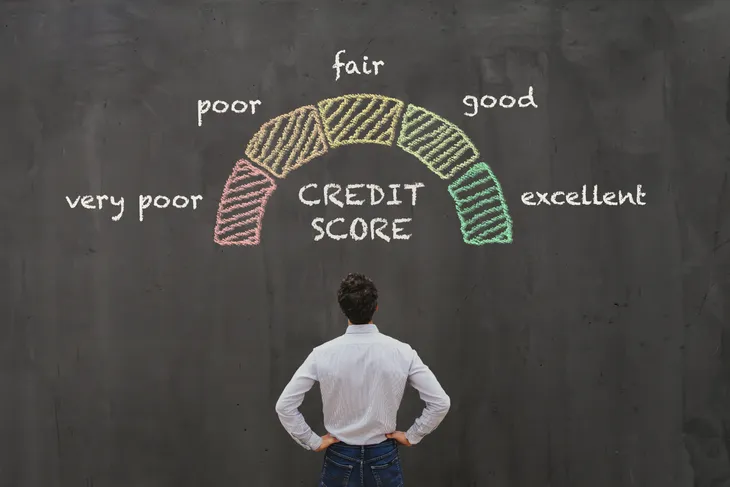Loan refinancing is a great way for borrowers to reduce their monthly payments and save on interest charges. However, things are a bit more challenging for people with bad credit. Low credit scores usually mean two things: higher interest rates and a tougher time getting financed. Your best bet is to focus on improving your credit score so you qualify for better offers.
Yet, that takes time and a lot of self-discipline. If you don’t have one or the other on your side, don’t fret. The current ultra-low interest rate environment means there’s likely a better deal out there to be had. Use the tips and tricks below to find one.
What Is Bad Credit?
First, you’ll want to do some damage assessment on your credit score to figure out where you stand. This requires an understanding of how credit bureaus define score ranges.
Credit bureaus typically use one of two main scoring paradigms: FICO and VantageScore. Both use ranges of 300 to 850, with lower scores reflecting lower creditworthiness. According to Experian, FICO scores of 669 or less are considered “bad credit.” On the VantageGuard scale, “bad credit” begins at 660 or less. You may still qualify for loans with scores in these ranges. However, the rates and terms you’re offered with reflect the elevated risk you pose to the lender.
What Is Refinancing?
When you refinance, you take out a new loan to cover an existing loan. The new loan should offer some kind of financial advantage compared to the loan you’re replacing. It will also pay off your existing loan’s remaining balance, terminating it. You then become responsible for paying back the new loan.
Consumers can refinance all kinds of loans, from mortgages to credit card debt. Some lenders specialize in refinancing plans. These include legacy financial institutions such as banks as well as innovative fintech alternatives.
The Benefits of Refinancing
Refinancing your car loan can benefit you financially in numerous ways. First, you could take the opportunity to secure lower interest rates. Perhaps your still-imperfect credit score has improved since you took out your initial loan. Overall market rates may have fallen. Other financial indicators like your debt-to-income ratio may have improved. These and other general conditions all boost your likelihood of securing a better rate.
People also refinance to reduce their monthly payments. This may involve extending the loan term or paying a little more interest over the loan’s lifespan. However, the financial flexibility that lower monthly payments deliver is often worth it. You can invest the extra money or use it to avoid taking on more expensive debt. It might also just give you some much-needed financial breathing room if you’re on a tight budget.
Does Refinancing Carry Any Risks?
When you refinance a loan, you’re essentially taking out a new loan to cover an existing one. If origination fees or other up-front costs apply, you will have to pay them. This can erode the entire deal’s value proposition.
While loans that extend your original repayment term can lower your monthly costs, they also leave you in debt longer. This can make it more difficult to repair a flagging credit score or achieve debt-free status. Also, your current score could dip as a result of your loan application. The refinancing plan will also count as a new credit source, which could have a similar effect.
8. First: Check Your Credit Score
Before you start shopping around, the first thing you should do is see where you stand. Each of the three main credit bureaus is required to provide you with one free credit report per year. These bureaus include Experian, Equifax, and TransUnion.
Review your report and check it for inaccuracies. Dispute any inaccuracies you find. If your score falls in the “poor” or “very poor” ranges, it may be best to hold off. Spend some time working your way back up to the next credit range tier, then reassess your situation.
7. Contact Your Lender
Lenders can be surprisingly flexible with their terms when faced with the prospect of losing business. To keep things simple, your first step should be to contact your current lender.
When you do, reveal that you’re thinking about refinancing and explain your objectives. They may respond with a refinancing offer that will save you the trouble of shopping around. You could also circle back to this step after obtaining quotes from competitors. Having a firm offer in hand from another lender could prompt them to match or beat it.
6. Shop Around for Quotes
As you seek offers, cast a wide net. Consider both legacy financial institutions and fintech alternatives. Conduct extensive searches and take the time to go through the pre-approval process. Honestly specifying your current credit score range will return more accurate and realistic quotes.
However, a word of caution before you proceed with any qualification or pre-approval queries. Make sure any such process you participate in involves only a “soft pull” of your credit data. Soft pulls don’t lower your credit score the way “hard pulls” do.
5. Comparing Interest Rates
Comparing the interest rates on various offers is easy when the rates are fixed. With fixed rates, lower is better, period. Things get a little more tricky when variable rates are involved.
Variable rates can change, depending on what happens with overall rates in the wider economy. They can rise or fall, making them more volatile but also potentially saving you money. Variable rate auto loans are somewhat rare, but they’re still available. If you’re considering one, run the numbers through a financial calculator to compare lifetime loan costs.
4. Comparing Loan Terms
Interest rates are just one of multiple points of comparison you should consider when evaluating loan offers. Others include the length of the loan and its annual percentage rate (APR).
APR is a little different than interest. It accounts for interest charges along with all other applicable charges and fees. APR creates a much more accurate picture of the loan’s true cost. When it comes to loan repayment terms, shorter periods are generally better. However, longer terms lead to lower monthly payments. This can deliver helpful financial flexibility, potentially making the higher overall costs worth it.
3. Check The Fine Print
Lenders sometimes bury additional fees in the fine print. These can include origination fees, application fees, and other charges.
Unfortunately, some unscrupulous lenders pull the old bait-and-switch on credit-challenged borrowers. They know this consumer segment has limited options. Thus, they draw borrowers in by promoting rock-bottom interest rates and appealing terms. But there’s a catch: all kinds of hidden costs are tacked on in the fine print. Fortunately, there’s also an easy solution: read the fine print carefully and avoid lenders that exploit this deceptive practice.
2. Crunch The Numbers
Once you’ve rounded up a firm set of offers, systematically compare them using a financial calculator. The loan’s total (lifetime) cost is critically important. However, it shouldn’t be the only thing you consider.
For many borrowers, monthly costs have a higher impact. Overcommitting your monthly income to loan payments can leave you short on funds for other expenses. That only increases the likelihood that you will need to borrow more money. It’s a leading cause of getting trapped in a never ending debt cycle.
1. Choose The Best Offer
Most people will probably tell you the best loan is the one that accrues the least interest over its lifespan. They aren’t necessarily wrong in saying that. However, that perspective is somewhat reductive. It doesn’t account for the borrower’s nuanced personal circumstances.
The best offer for you may be one that costs slightly more overall but delivers significant month-to-month relief. Thus, it’s important to define your objective before you start looking around for a refinancing loan. If reducing monthly payments is your top priority, shop accordingly. The same is true of securing lower interest rates and reducing your loan repayment period.
Reducing your personal debt load will improve your credit score more than anything else. There are numerous ways to get there. The road is easier to travel when you have a plan.














